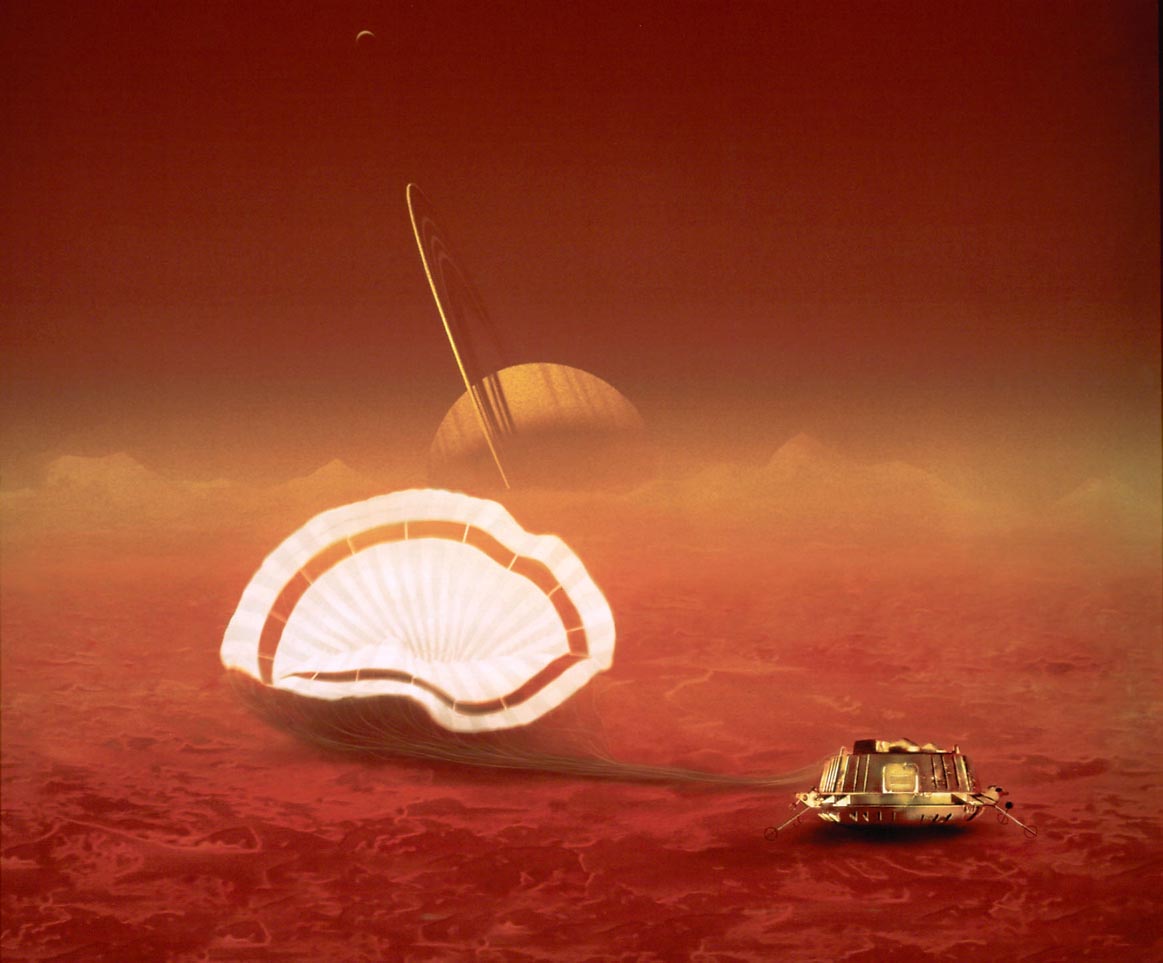Huygens Makes History On Titan
14 January 2005
History was made earlier today when ESA’s Huygens probe successfully landed on Saturn’s largest moon, Titan.
Signals received this afternoon at the European Space Operations Centre (ESOC) in Darmstadt, Germany, show that the saucer-shaped spacecraft survived its fiery entry into Titan’s dense atmosphere.
It was mankind’s first successful attempt to deliver a probe to a planet-sized world in the remote outer reaches of the Solar System.
After a seven-year piggyback ride on board the Cassini spacecraft, Huygens was released from the mother ship on 25 December.
Flying solo for 20 days, Huygens slammed into Titan’s upper atmosphere at 11:13 CET (10.13 GMT) today. Protected by a heat shield, the probe slowed from 18,000 to 1,400 km per hour in just three minutes.
Soon after, a large parachute opened out. At a height of about 160 km, the probe’s instruments began to take pictures and study the atmosphere. For more than two hours, data from Huygens were received and stored on Cassini as it flew overhead.
Since Saturn is presently located 1,200 million km from the Earth, the signals from Cassini took 67 minutes to arrive.
Finally a large radio receiver in the United States picked up Cassini’s faint whispers. The data were then sent to ESOC for analysis. The long, nail-biting wait for the scientists had come to an end.
“Titan is a fascinating world and we are now eagerly awaiting the results,” said Professor David Southwood, Director of ESA’s scientific programmme.






